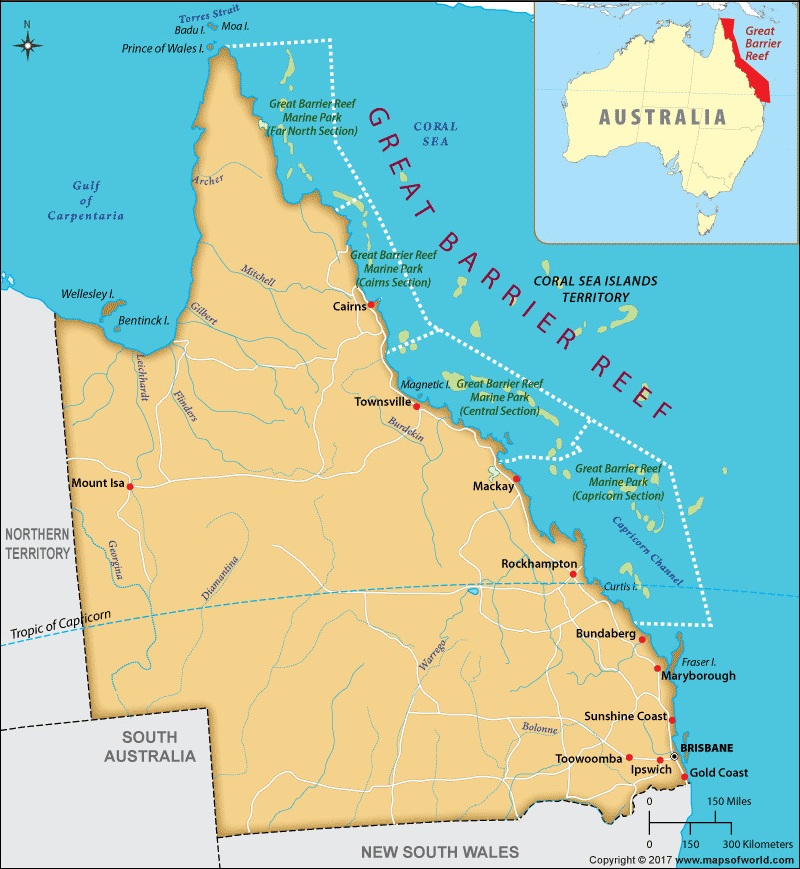Why in the News?
The Great Barrier Reef is facing its sharpest coral decline in 40 years, with the 2024 mass bleaching—driven by climate change, cyclones, and coral predators—severely damaging large reef areas.

About Great Barrier Reef:
- Location: Coral Sea, off the northeast coast of Queensland, Australia.
- Length & Area: Extends ~2,300 km; comprises ~3,000 reefs and 900 islands, covering ~350,000 square kilometers (about 10% of global coral reef ecosystems).
- Biodiversity:
- Hosts 400 coral species, 1,500 fish species, and 4,000 mollusk species.
- Habitat for endangered species like the dugong and green turtle.
- Reef Types: Includes platform reefs, wall reefs, and fringing reefs.
- Protection Status:
- Managed by the Great Barrier Reef Marine Park Authority.
- Declared a United Nations Educational, Scientific and Cultural Organization (UNESCO) World Heritage Site in 1981.
- Mass Bleaching Years: Notable events occurred in 1998, 2002, 2016, 2017, 2020, 2022, 2024, and 2025.
Coral Decline and Bleaching Events:
- Main Cause: Heat stress due to climate change, particularly during marine heatwaves.
- 2024 Event: Fifth major bleaching since 2016; had the widest spatial impact recorded in the Australian Institute of Marine Science’s 39-year monitoring program.
- Additional Damage: Cyclones (e.g., Cyclone Jasper) and flood plumes caused physical damage and freshwater stress.
- Biological Threats: Crown-of-thorns starfish (COTS) outbreaks intensified coral predation, especially in the Swains sector.
- 2025 Survey Findings:
- 48% of 124 surveyed reefs showed coral decline.
- Only 10% recorded an increase in coral cover.
- Regional Impact: Southern Great Barrier Reef saw a 30.6% drop in hard coral cover—the sharpest annual decline ever recorded in that zone.
| [UPSC 2014] The scientific view is that the increase in global temperature should not exceed 2 0 C above pre-industrial level. If the global temperature increases beyond 30 C above the pre-industrial level, what can be its possible impact/impacts on the world?
1. Terrestrial biosphere tends toward a net carbon source. 2. Widespread coral mortality will occur. 3. All the global wetlands will permanently disappear. 4. Cultivation of cereals will not be possible anywhere in the world. Select the correct answer using the code given below: Options: (a) 1 only (b) 1 and 2 only* (c) 2, 3 and 4 only (d) 1, 2, 3 and 4 only |
Get an IAS/IPS ranker as your 1: 1 personal mentor for UPSC 2024

